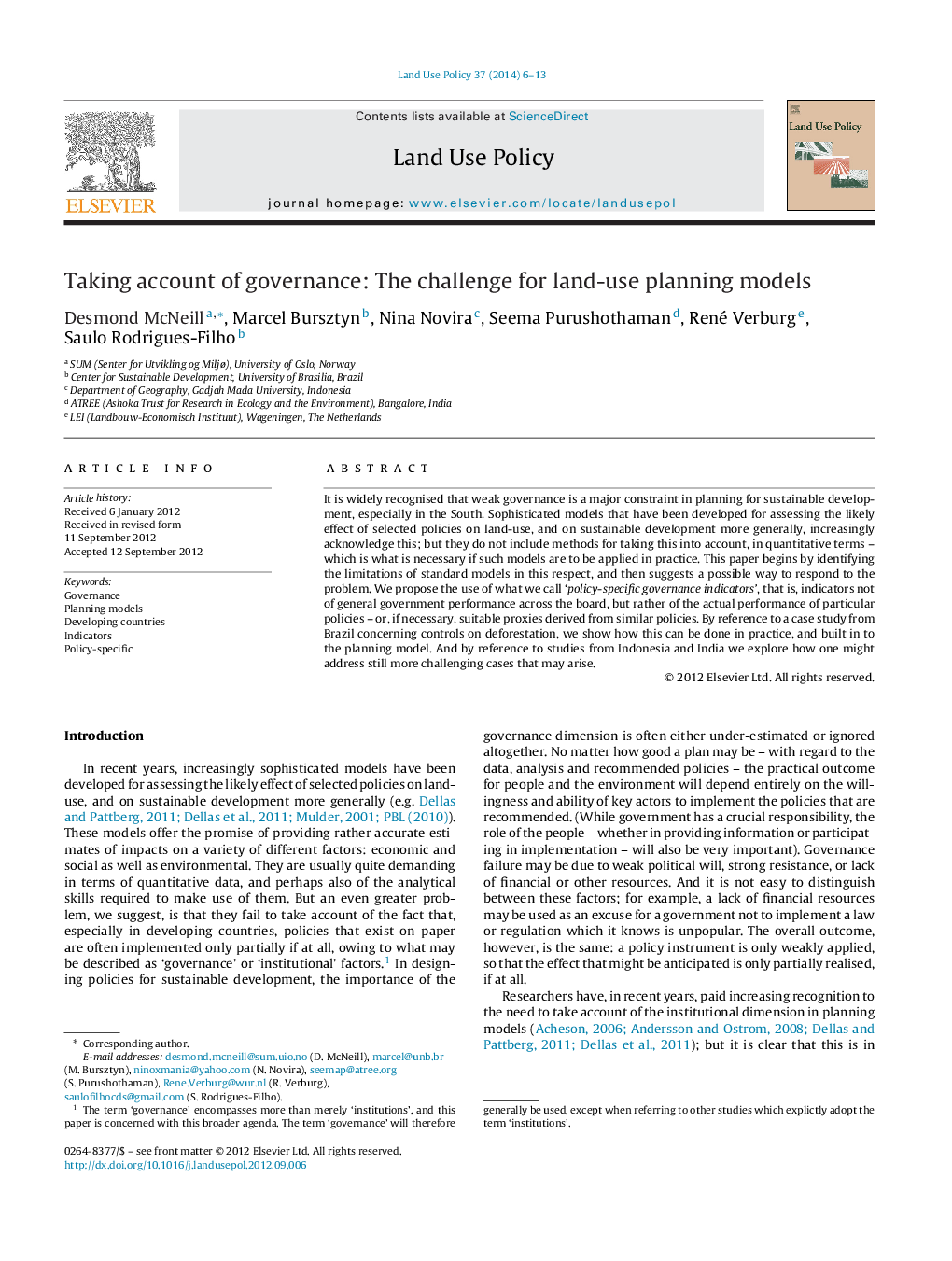| کد مقاله | کد نشریه | سال انتشار | مقاله انگلیسی | نسخه تمام متن |
|---|---|---|---|---|
| 93151 | 160115 | 2014 | 8 صفحه PDF | دانلود رایگان |
It is widely recognised that weak governance is a major constraint in planning for sustainable development, especially in the South. Sophisticated models that have been developed for assessing the likely effect of selected policies on land-use, and on sustainable development more generally, increasingly acknowledge this; but they do not include methods for taking this into account, in quantitative terms – which is what is necessary if such models are to be applied in practice. This paper begins by identifying the limitations of standard models in this respect, and then suggests a possible way to respond to the problem. We propose the use of what we call ‘policy-specific governance indicators’, that is, indicators not of general government performance across the board, but rather of the actual performance of particular policies – or, if necessary, suitable proxies derived from similar policies. By reference to a case study from Brazil concerning controls on deforestation, we show how this can be done in practice, and built in to the planning model. And by reference to studies from Indonesia and India we explore how one might address still more challenging cases that may arise.
► Identifies the problem of weak governance in implementing land use policies.
► Shows how standard land use planning models fail to take account of this.
► Proposes a method of ‘policy-specific governance indicators’ to address the problem.
► Draws on case studies from Brazil, India and Indonesia.
Journal: Land Use Policy - Volume 37, March 2014, Pages 6–13
